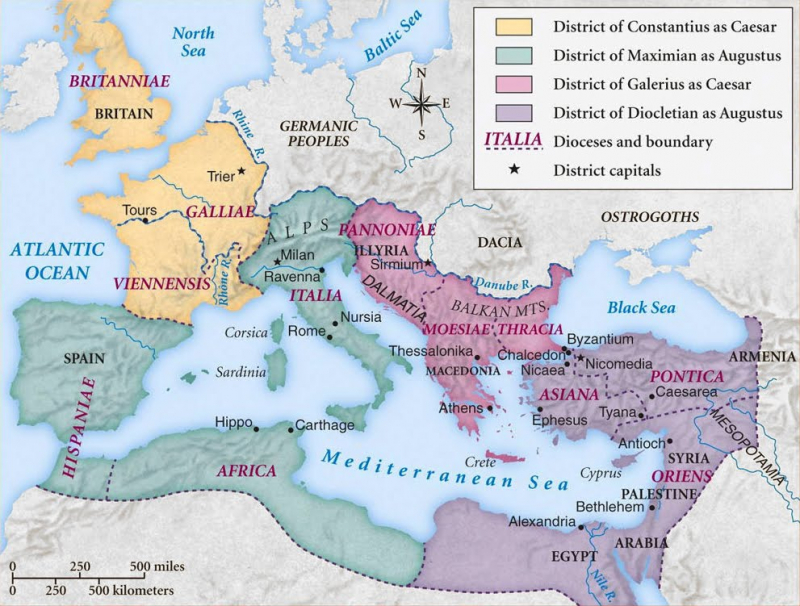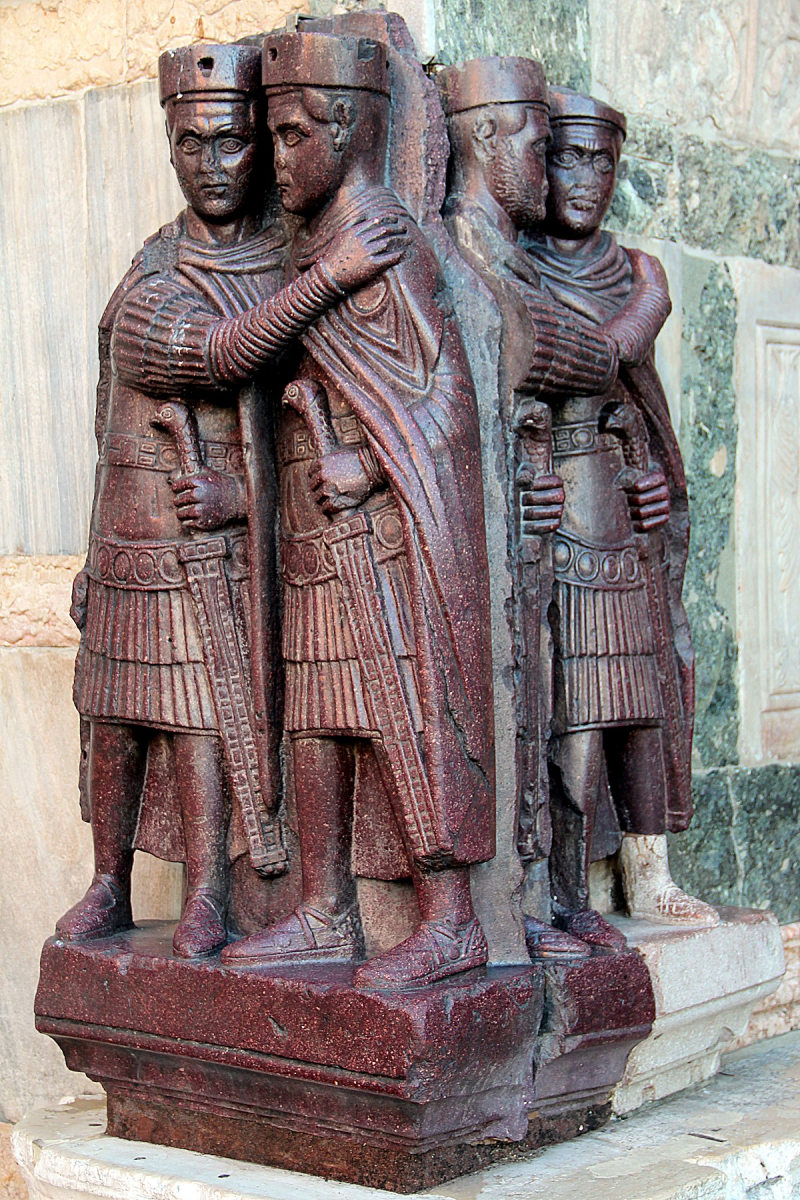To put a stop to the third-century turmoil, Diocletian established the tetrarchy
To put a stop to the third-century turmoil, Diocletian established the tetrarchy. Each emperor would preside over a fourth of the empire under this "tetrarchy," or "rule of four." Then, Diocletian and Maximian began looking for two Caesars, one for the East and the other for the West. They need two Caesars, one for each emperor. Constantius, his praetorian commander, was chosen by Maximian to be his Caesar. Galerius was chosen by Diocletian to be his Caesar at the same time. Both of the recently chosen Caesars were well-known for having served as commanders and under former Emperors.
The four tetrarchs established their bases outside of Rome, in towns closer to the boundaries, primarily as bases of operations for the defense of the empire against invading enemies. Rome no longer served as the Roman Empire's practical capital, but it remained its titular capital and was nevertheless governed by its own, distinctive Prefect of the City (Praefectus Urbis). The four tetrarchs did not precisely divide the Roman state into four separate sub-empires at this time, and there was no clear separation of regional authority between them. Within the Roman Empire, each emperor had a sphere of power, although this influence largely affected the battlefront. While leaving much of the administration to the hierarchical bureaucracy led by his Praetorian Prefect, the tetrarch frequently spent time in the field. An important position in the Roman Empire was known as the Praetorian Prefect. Originally the commander of the Praetorian Guard, the position rapidly expanded to include substantial legal and administrative duties, with its holders serving as the emperor's top advisors.














